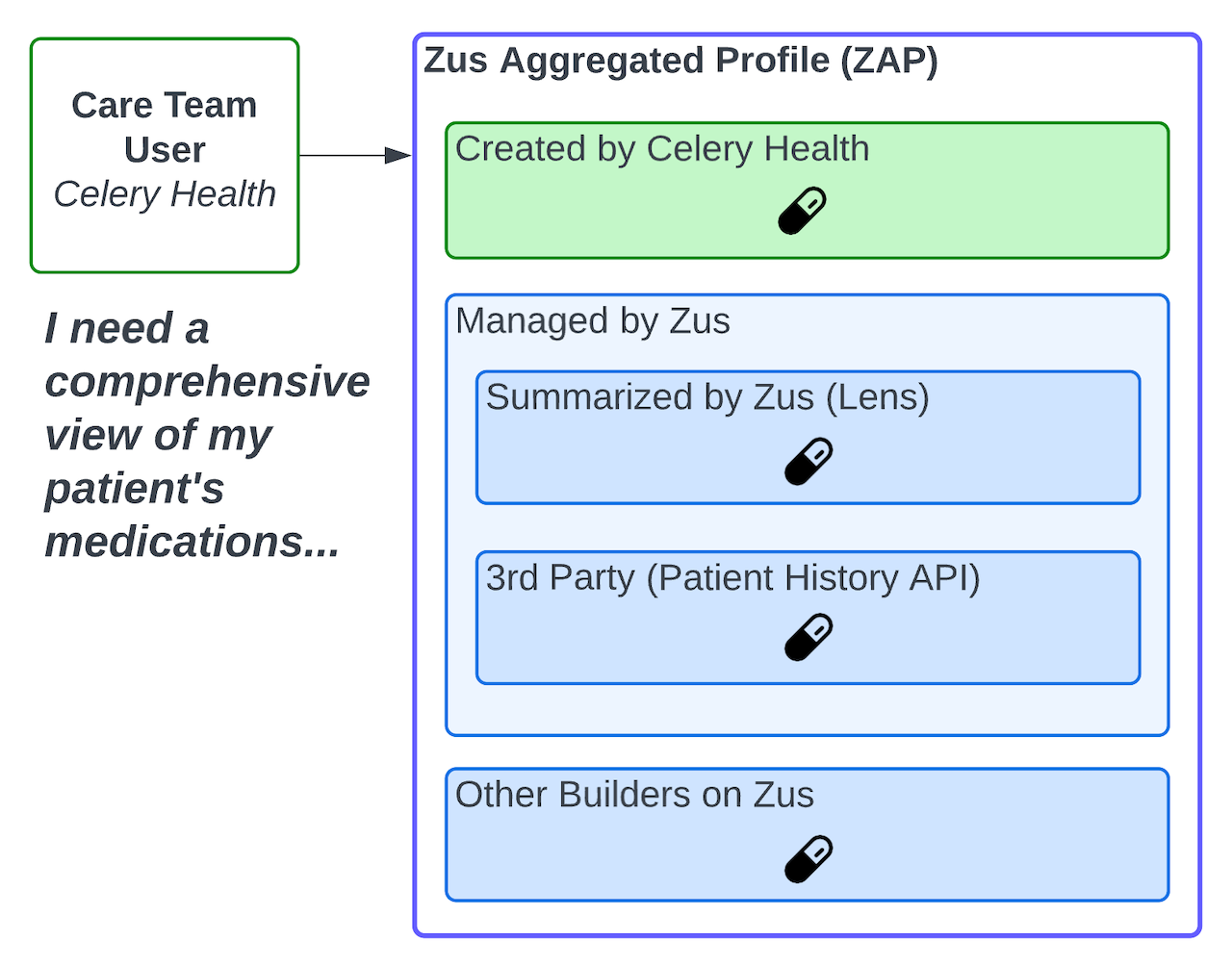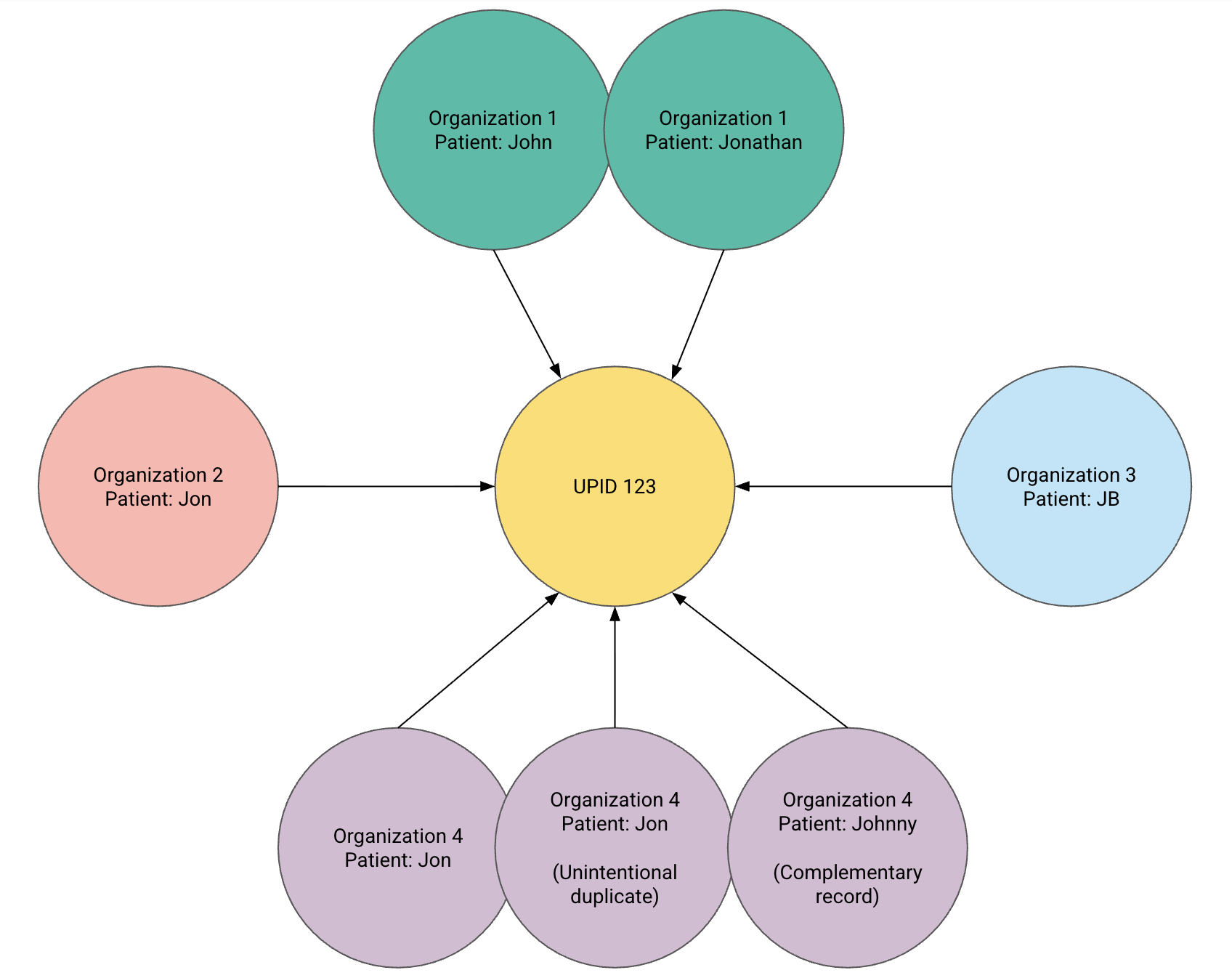ZAP Basics
The Zus Aggregated Profile (ZAP) is a comprehensive record of a patient's health history assembled from clinical information provided by your organization, as well as external information sourced by Zus. To join together patient data across these different data sources, Zus assigns each patient a Universal Patient Identifier (UPID), which uniquely identifies that patient throughout the Zus platform.
To illustrate how the ZAP aggregates patient data, imagine you are a care team user at Celery Health looking to reconcile a patient’s medications. You can use the patient's ZAP to see medications data for that patient from across the following data sources:
- Your care team
- External network partners (e.g. EHR and pharmacy networks)
- Other Builders on Zus treating the same patient
- Zus generated lens (i.e. summary) data, derived from data across all sources

To serve the needs of different user profiles, Zus provides several methods for accessing the ZAP:
- Clinical users can read from the ZAP to inform patient care by using the Zus Application or via an integration into an EHR such as athenahealth or Elation
- Developers can read/write from the ZAP and integrate the data into their applications using Zus' FHIR APIs.
- Data/population health analysts can perform analyses of Zus data across their patient population using Zus Data Marts.
The Universal Patient Identifier (UPID)
Zus leverages its own identity mapping service, the Universal Patient Index (UPI), to provide functionality commonly known as a Master Patient Index. As with other MPI's, patient records submitted to Zus are compared against all of the patient identities known to Zus, and granted an index key, or Universal Patient Identifier (UPID). This UPID is shared across any and all patient records believed to be the same real individual. The UPI automatically operates on all patient records in order to build towards a cohesive and national view of patient identities and medical histories.

Our UPI service utilizes the following data elements in its patient matching algorithm:
- Name
- Date of birth
- Home address
- Phone number
- Email address
- Patient identifiers associated with the patient (e.g. EHR medical record number)
In order to safeguard the private information of our patients, our matching models err on the side of caution, requiring a surfeit of information in some cases to consider matches viable. UPI performs automatic matching and identity assignment of patient records only when enough information is present and aligned across the novel record and the existing identity.
Zus' UPIDs are displayed as universally unique identifier values, or 32 character hexadecimal sequences, e.g. 6738c92e-d3ec-424b-84c1-ffbbb16b3721.
Non-Permanence of Universal Patient Identifiers (UPIDs)A UPID is not a permanent identifier for a patient. It can change due to updates to patient demographics, improved matching algorithms, and corrections to records. As new information is added and data accuracy improves, the UPID may be reassigned to better reflect the patient's identity. Users should note that the UPID assigned at one time might differ in the future due to ongoing data refinement.
Zus automatically leaves the UPID as a breadcrumb on your patient record for you to use without touching the UPI interfaces directly. The UPID identifier on a patient resource looks like this:
"identifier": [
{
"system": "https://zusapi.com/fhir/identifier/universal-id",
"value": "<UPID>"
}
]You could query for all patient resources that share a UPID using the following API call:
https://api.zusapi.com/fhir/Patient?upid={{UPID}}
UPI PermissionsBuilder users and app clients are NOT permitted to create, modify, or delete UPI resources or identifiers. Any attempt to do so will result in a 403 error.
Updated 5 days ago
